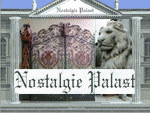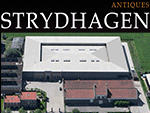St Jerome, Alessandro Bonvicino, Known As Moretto (brescia, C. 1498 – 1554)
Sixteenth-century Lombard school
Workshop of Alessandro Bonvicino, known as Moretto (Brescia, c. 1498 – 1554)
St Jerome Oil on canvas 81 x 68 cm. - In a fine antique frame 98 x 85 cm.
Provenance: Pandolfini Florence, 29 September 2020 (16th century Lombard school, lot 161, estimate €10,000 / 15,000)
https://www.pandolfini.it/uk/auction-1005/scuola-lombarda-sec-xvi-1-12020006477
Full details of the work (Click HERE)
A valuable depiction of St Jerome, a doctor of the Church who lived between the 4th and 5th centuries, portrayed here according to the typical iconography that shows him in the dual role of penitent hermit in the desert and humanist intent on reading, in a deserted and wild landscape at the end of which there is a view of a city, symbolising the contrast between nature and civilisation.
The multifaceted figure of St Jerome, hermit, penitent, cardinal and fine humanist, who translated the Bible into Latin, was very popular in Lombardy between the 15th and 16th centuries, the supreme example of the harmony between classical knowledge and Christian virtue.
He was therefore a favourite subject for a refined and cultured audience, and was often illustrated in small works intended for private devotion. His intensely pensive gaze is turned towards the open book, his canonical iconographic attribute, referring to his fruitful activity as a scholar and theologian, which made him the forerunner of the Renaissance humanist.
It is a work of remarkable quality in terms of illustrative clarity, pictorial refinement and chromatic sensitivity, a testimony of the mature Renaissance, painted in the Lombardy area around the end of the sixteenth century, and specifically indebted to the models conceived by Alessandro Bonvicino, known as il Moretto (Brescia, c. 1498 – 1554), one of the leading artists of the early Renaissance in Brescia, who repeatedly tackled the subject in a variety of illustrative ways.
Devotional paintings such as this were among Bonvicino's most important works, and the fact that there are no other images that are strictly analogous to this one, suggests that the canvas should be included in the extremely complex catalogue of works produced by the workshop, presumably under the supervision of the master himself.
The Venetian influence is strongly felt in the work: both the painting style and the colour scheme, in which the bright green of the drapery enveloping the Saint is the dominant colour, are elements that recall the works of Titian. Behind Saint Jerome, beyond the space of a window, we can see a wide hilly landscape with a clear sky, characterised by a vivid blue, typical of the artist from Brescia, with just a few clouds.
The figure of St Jerome frequently appears in the painter's works, many of which have been lost, but traces of which remain in literary sources; in particular, the chromatic, light and tonal intonation of the image, although more composed and traditional, may recall the St Jerome in Meditation of the Borromeo collection at Isola Bella dated between 1540 and 1545 (fig.1 - https://www.lombardiabeniculturali.it/opere-arte/schede/C0050-00086/).
The figure, the face and the attitude evoke the St Luke of the Chapel of the Sacrament in St John the Evangelist (fig.2 - https://catalogo.beniculturali. it/detail/HistoricOrArtisticProperty/0300044732), while the type of tunic with the knot on the shoulder can be found in one of the apostles in the Assumption of the Old Cathedral (fig. 3 - https://it.m.wikipedia. org/wiki/File:Assunzione_della_Vergine_%28Moretto_Duomo_vecchio%29.jpg), or in the Madonna with Child and St Jerome from a Private Collection (fig. 4 - https://it.m.wikipedia.org/wiki/File:Madonna_con_bambino_e_san_Girolamo.jpg).
These clues therefore seem to confirm the close relationship between the work and the artist's production.
We organise and take care of the shipment of the purchased works, both in Italy and abroad, through professional and insured carriers.
It is also possible to see the painting in the gallery in Riva del Garda, we will be happy to welcome you and show you our collection of works.
Contact us, with no obligation, for any further information.
Follow us also on:
https://www.instagram.com/galleriacastelbarco/?hl=it
https://www.facebook.com/galleriacastelbarco/
|




































